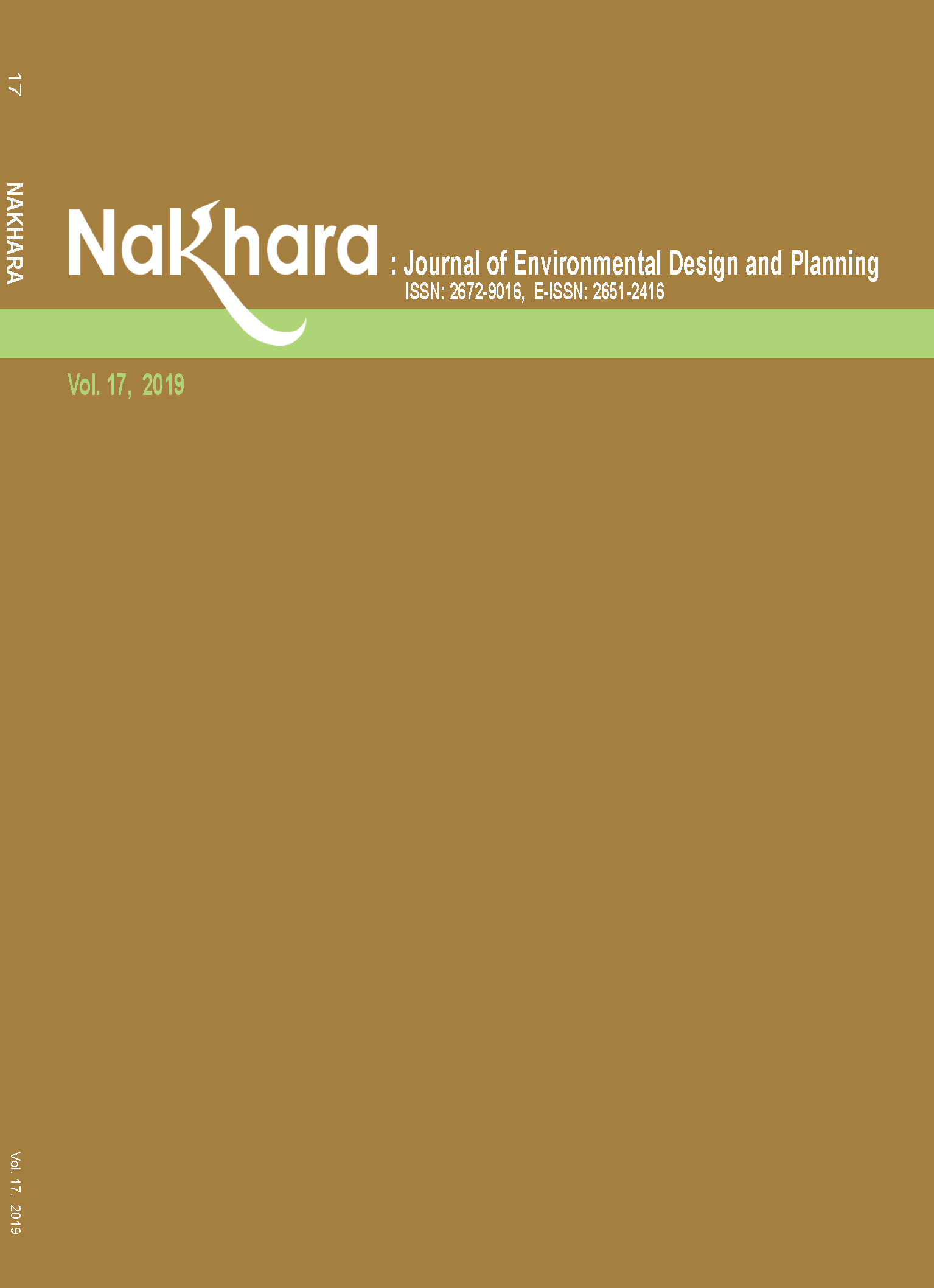Collaborative Community Design Processes in Rural and Urban Settlements in Thailand
Main Article Content
Abstract
This paper compares two contrasting processes of low-income community design in rural and urban areas in Thailand. The low-income Srabot community in the urban area is constructing a new settlement on newly purchased land. In parallel, the indigenous Banggloy community is located in the National Park as a community who were forcibly evicted from their village home to an allocated area where they constructed dwellings in the new village. Both cases were supported by housing loans and funding from the Thai Community Organizations Development Institute (CODI)1. The aim of this paper is to examine collaborative learning process based on low-income community design. Both cases employed participatory housing and planning design workshops. The urban community focused on designing the community masterplan. In contrast, the rural indigenous community concentrated on the housing design. In both projects, the occupants were encouraged to be the key actors and to decentralize the solution finding process. The outcome of workshops generated the activities and possible solutions that respect the need for the stakeholders and motivate them to continue to be active.
Article Details

This work is licensed under a Creative Commons Attribution-NonCommercial-NoDerivatives 4.0 International License.
References
Andersen, L. B., et al. (2015). Participation as a matter of concern in participatory design. CoDesign, 11, 3–4, 250–261. doi: 10.1080/15710882.2015.1081246
Binder, T., Brandt, E., & Gregory, J. (2008). Design participation(-s). CoDesign, 4, 1, 1–3.
Community Organizations Development Institute (CODI). 2016. CODI History. Retrieved from https://www.codi.or.th/housing/FrontpageHistory.html
Dalsgaard, P. (2012). Participatory design in large-scale public projects: Challenges and opportunities. Design Issues, 28, 3, 34–47.
Disalvo, C., et al. (2012). Toward a public rhetoric through participatory design: Critical engagements and creative expression in the neighborhood networks project. Design Issues, 28, 3, 48–61.
Edwards, B. (2001). Rough guide to sustainability. London: RIBA.
Halskov, K., & Hansen, N.B. (2015). The diversity of participatory design research practice at PDC 2002–2012. International Journal of Human - Computer Studies, 74, 81–92.
Hess, J., & Pipek, V. (2012). Community-driven development: Approaching Participatory design in the online world. Design Issues, 28, 3, 62–76.
Iversen, O.S., Halskov, K,. & Leong, T.W. (2012). Valuesled participatory design, CoDesign, 8, 2–3, 87–103. DOI: 10.1080/15710882.2012.672575
Johannessen, L. K., & Ellingsen, G. (2012). Lightweight design methods in integrated practices. Design Issues, 28, 3, 22–33.
Kang, M., Choo, P., & Watters, C.E. (2015). Design for experiencing: Participatory design approach with multidisciplinary perspectives. Procedia - Social and Behavioral Sciences, 174: 830–33.
Sanders, E. B.-N., & Stappers, P.J. (2008). Co-creation and the new landscapes of design. CoDesign, 4, 1, 5–18.
Sanoff, H. (2000). Community participation methods in design and planning. Chichester: Wiley.
Sanoff, H. (2007). Special issue on participatory design. Design Studies, 28, 3, 213–15.
Senge, P., & Scharmer, O. (2001). Community action research: Learning as a community of practitioner, consultants and researchers. In P. Reason & H. Bradbury, (Eds.), The handbook of action research: Participative inquiry and practice (pp. 250–60). London: SAGE.
Sheng, Y.K. (1987). Promoting community participation through training: The DANIDA/UNCHS training programme. Habitat International, 11, 4, 77–86.
Simonsen, J., & Hertzum, M. (2012). Sustained participatory design: Extending the iterative approach. Design Issues, 28, 3, 10–21.
Soen, D. (1981). Citizen and community participation in urban renewal and rehabilitation—Comments on theory and practice. Community Development Journal 16, 2,105–18.
Storni, C. (2015). Notes on ANT for designers: Ontological, methodological and epistemological turn in collaborative design. CoDesign, 11, 3–4, 166–78.
Stringer, E. T. (2004). Action research in education. London: SAGE Publications.
Swann, C. (2012). Action research and the practice of design. Design Issues, 18, 1, 49–61.
Talò, C., Mannarini, T., & Rochira, A. (2014). Sense of community and community participation: A metaanalytic review. Social Indicators Research, 117, 1, 1–28.
Thai National Parks. (2016). Kaeng Krachan National Park. Retrieved from https://www.thainationalparks.com/kaengkrachan- national-park
UN-HABITAT. (1960). General assembly resolution defining the three options for self-determination General Assembly Resolution 1541 (XV). Retrieved from https://www.un.org/en/ga/search/view_doc.asp?symbol=A/RES/1541(XV)
UN-HABITAT. (2015). A practical guide to designing, planning, and executing citywide slum upgrading programmes. Nairobi: UN-Habitat

